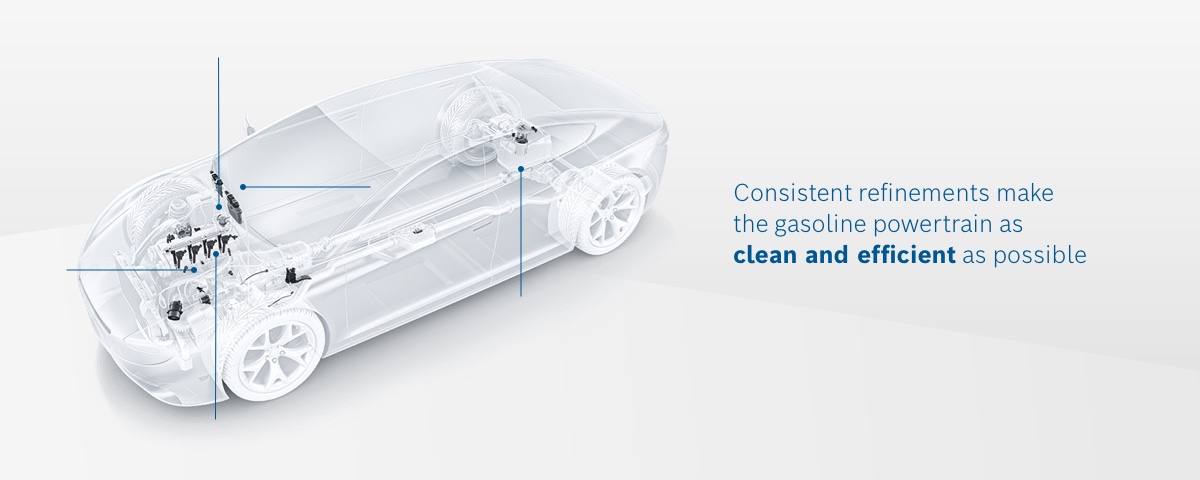Are you interested in our solutions? Then write us a message. Our sales team will be happy to help you.
Start enquiryEven in the future, two thirds of all new cars worldwide will still be driven by an internal-combustion engine. This is reason enough for Bosch to make one of the world’s most important powertrains as efficient and resource-saving as possible.
Heiko Weller
People want to stay mobile, even in a future where environmental protection is crucial. The focus will continue to be on affordability and availability. All the more reason to optimize vehicles with internal-combustion engines to address both sustainability and the demand for affordable mobility.
Heiko Weller explains how hybridization and synthetic or renewable fuels can considerably reduce the amount of CO2 emitted by vehicles with internal-combustion engines and thereby make them an important component of sustainable mobility concepts.
through the use of fuels generated from renewable sources
in cars for many years
for various system pressures of up to 350 bar
can be reached with an average internal-combustion engine
It was the beginning of the 1950s when Bosch launched the first gasoline direct-injection system onto the market. Nowadays, this system is still the industry standard in new internal-combustion engines. The constantly rising demand for mobility around the world means that the need for optimized fuel consumption and reduced emissions is also growing – a challenge that continues to make gasoline direct injection a key technology for the future.
Gasoline direct injection offers many advantages for drivers and vehicle manufacturers alike. Downsizing and turbocharging make fuel consumption and CO2 emissions much lower while maintaining the same output. Thanks to the high level of torque, drivers benefit from an improved vehicle response and more dynamic handling. Increasing the charge-air pressure while reducing the displacement ensures a specific output of 60–100 kW/l. Bosch has kept on developing gasoline direct injection since 1951, offering in this regard not only the very best technology to vehicle manufacturers, but also many years of technical expertise.

For gasoline engines – as for their diesel counterparts – the answer to urgent environmental concerns is an improved system approach. As an example, the use of the latest particle filters in conjunction with an innovative injection system reduces the emissions of gases and particulate matter to a fraction of the levels demanded by legislation.
As such, the influence of these vehicles on air quality is not only negligible in major conurbations.
Are you interested in our solutions? Then write us a message. Our sales team will be happy to help you.
Start enquiry
